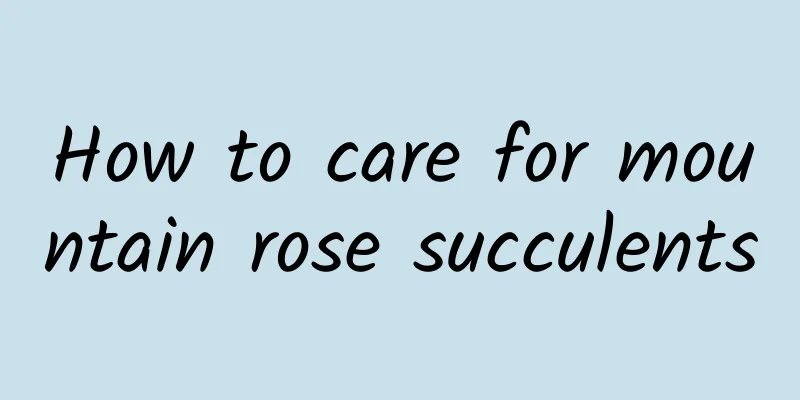After the flowers fade, just pinch off a branch and throw it in the soil and it will come back to life. Don’t buy it no matter how cheap it is!

Gardenia cuttings1. Prune branches after gardenia blooms The gardenia branches are the strongest after the flowers have faded, and the survival rate of cuttings using such branches is the highest. 2. Processing cuttings Process the cut gardenia branches before grafting, cut the lower end of the branches into an oblique surface, and the branch length should be more than 10 cm. 3. Sterilization and drying Place the processed gardenia branches in potassium permanganate solution, soak for about 30 minutes, then take out and place in a ventilated place to dry. 4. Make a greenhouse Prepare a large plastic bottle and cut it in the middle with a knife without cutting it through. 5. Make the foam support board Prepare a foam board, cut it into a size similar to that of a plastic bottle, poke a few holes in the foam board, and insert the dried gardenias into the holes. 6. Place the branches in the greenhouse Place the gardenia inserted on the foam board into a plastic bottle filled with clean water, and seal the plastic bottle with tape. 7. Planting Gardenia by Cutting After about 15-20 days, when the gardenia grows thick white roots, it can be transplanted. Rose cuttings1. Prune branches after rose blooming After the flowers fade, the rose needs to be pruned to help it bloom faster. It is a waste to throw away the cut branches, it is better to use them for cuttings~ 2. Pruning rose cuttings Choose thick and dark green branches for cuttings, and keep at least one bud at the bottom of the cuttings. 3. Insert into soil or soak in water Vermiculite can be used as the substrate for soil cuttings. Before inserting the rose, you can first water it thoroughly with a diluted potassium permanganate solution to ensure that at least one bud point is buried in the soil and the tray should be filled with water. Roses can also be rooted by hydroponic cuttings. Just choose clean tap water and add a little rooting powder to the water. 4. Astigmatism maintenance Place the grafted roses in a diffuse light environment, avoid strong light and fertilization, and spray a little thin foliar fertilizer every week. 5. Planting rose cuttings About 30 days later, the rose cuttings will grow white fibrous roots and can be planted in pots. 6. Water the soil thoroughly The soil in the planting pot must be watered thoroughly, and it is best not to choose a pot that is too large, otherwise water will easily accumulate. Chrysanthemum cuttings1. Pruning chrysanthemums after flowering After the chrysanthemums fade, they also need a major pruning to reduce nutrient consumption. The branches cut at this time have accumulated a lot of nutrients and are highly disease-resistant, making them perfect for cuttings! 2. Pruning chrysanthemum cuttings Choose strong and emerald green branches, leave 2-3 large leaves, cut off the rest, and leave 1cm below the bottom leaf and cut off the rest. 3. Matrix selection The substrate for cuttings can be a mixture of peat soil and perlite. Before inserting the branches, you can poke holes in the substrate with a toothpick. 4. Dip the rooting powder into the soil Dip the cuttings in the rooting powder prepared in advance and insert them into the soil to a depth of about 2 cm. 5. Watering and maintenance After cuttings, water thoroughly, place in a cool and ventilated place, and spray water 1-2 times a day. 6. Planting after rooting After about 20-30 days, the cuttings of chrysanthemums will grow fine roots and new leaves. At this time, take it out of the hole tray and move it into a flowerpot. Rhododendron cuttings1. Prune branches after azalea blooms From the sprouting in early spring to the withering of azalea, it takes several months to absorb nutrients. At this time, the azalea branches are most mature, strong and not lignified, making them suitable for cuttings. 2. Pruning branches Choose strong and green branches. Old branches are not easy to survive. Use sharp scissors to cut the incision into a flat surface, remove the top buds, leaving 3-4 pairs of leaves, and the bare stem part is about 5 centimeters. 3. Handle foam box Prepare a foam box, poke a few holes in the bottom, and place a few broken tiles on the bottom of the box to plant rhododendrons. 4. Water the soil thoroughly The soil for rhododendron cuttings should be loose and breathable. You can choose to mix garden soil, coal slag, sand, etc., spread about 5 centimeters, and then spread another 5 centimeters of substrate and water it thoroughly. 5. Insert the seeds into the soil After watering thoroughly, do not plant the cuttings immediately. Wait for 30 minutes for the soil to fully absorb water before planting. Insert the cuttings about 2-3 cm into the soil. 6. Water with root sterilizing water After all the azalea branches have been cut, water them again to allow the branches to stick to the soil. After 10 minutes, water the pot with root-growing and sterilizing water until the surface of the soil is thoroughly wet. 7. Transparent film sealing Cover the foam box with transparent film and seal it with tape or rope. There is no need to water it until the azalea is established. Keep the foam box in a cool place and avoid direct sunlight. 8. Rooting and planting Rhododendron takes a long time to take root, and it takes about two months. After roots grow, it is planted together with the substrate. 9. Water thoroughly Water the transplanted azalea thoroughly and place it in a ventilated and cool place for maintenance. Jasmine cuttings1. Prune branches after jasmine blooms After a spring of nutrient accumulation, the jasmine branches grow most vigorously after the flowers have faded, and it is particularly easy to sprout branches and produce flower buds when used for cuttings. 2. Processing branches Prune the cut jasmine branches, leaving only two leaves on each cutting. Woody branches can also be used for cuttings, but make sure there is a bud at each end of the branch. 3. Drill holes in the soil To facilitate cuttings, you can directly plant them in the original jasmine pot and poke a few holes in the pot with chopsticks or a drill. 4. Put jasmine into the pot Insert the jasmine branches to be cut into the holes and press the soil around the cuttings with your fingers. 5. Water thoroughly and maintain the balcony After potting, water it thoroughly at one time, and then place it on a south balcony with sufficient light for maintenance. Have you learned how to propagate these flowers by cuttings after they bloom? If you still have questions, Welcome to communicate with Huahua in the comment area~ |
Recommend
How long does it take for Dendrobium candidum to bloom?
1. How long does it take to bloom? Generally, aft...
Which aloe vera can be eaten? Pictures of edible aloe vera
1. Aloe arborescens Many people don’t know that a...
Which month is the best to plant green beans?
Dry-fried green beans are popular for their uniqu...
How to disinfect succulent soil
1. Sun exposure disinfection To disinfect the soi...
Maintenance methods of Bauhinia bonsai
Bauhinia bonsai care: placement environment Bauhi...
Where is the suitable place for planting Dendrobium candidum and what is the suitable growth environment
Dendrobium officinale planting area As more and m...
How to propagate the cuttings of thorny plum flowers When is the best time to propagate the cuttings of thorny plum flowers
It is best to propagate the barberry flowers by c...
Methods for improving saline-alkali land
1. Deepen cultivation and improvement This is a v...
How many sweet alyssum plants should be planted in one pot
How many sweet alyssum trees can be planted in on...
You can also grow your green ivy to look like a noble lady, and one pot of it will beautify your home!
Pothos When you go to the flower market, you can ...
How to propagate Magnolia grandiflora
1. Seed propagation method Seed propagation is th...
Key technologies for high-yield and high-quality cultivation of Zanthoxylum bungeanum
Sichuan pepper is a popular spice crop known for ...
Mandala flower language in different colors
Purple Mandala fear Blue Mandala Fraud, love Pink...
How to plant roses? Planting time and method
Rose planting time If you plant roses indoors or ...
What are the effects of black wolfberry and the correct way to eat black wolfberry
1. Introduction to efficacy 1. Improve sleep: Bla...









